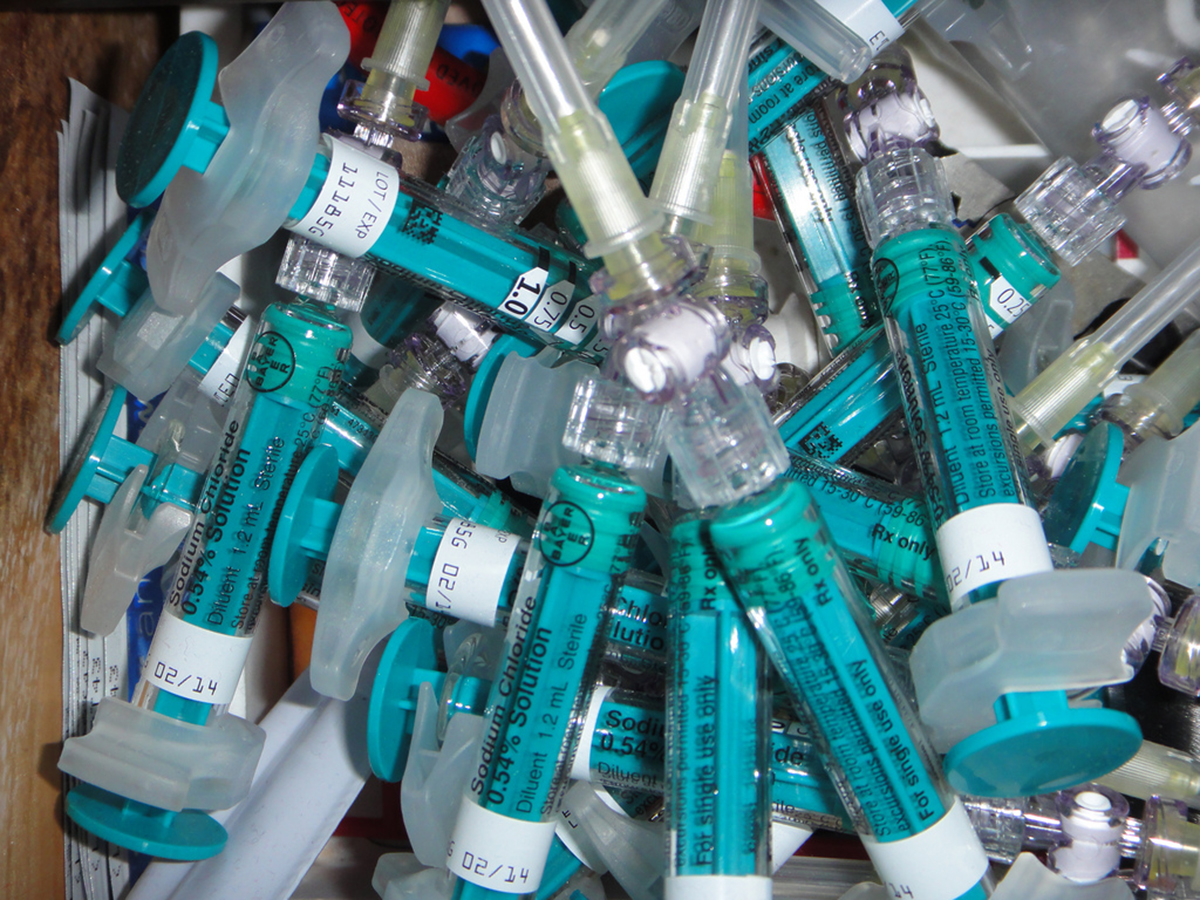Table of Contents
Interferon alpha or interferon alfa-2b (Intron A) has been approved by the US Food and Drug Administration (FDA) as adjuvant therapy for melanoma in 1996. In spite of the promising effects shown by interferon therapy towards the improvement of patients with advanced melanoma, many doctors are hesitant to use it because of its toxic side effects. Naturally produced interferons usually produce symptoms such as fever, fatigue, muscle aches, joint pains and other flu-like symptoms as they act to fight disease. As adjuvant treatment for melanoma, interferon-alpha is usually given in high doses for greater effectivity. Interferon therapy is initially administered directly into the blood stream (intravenous) during the first or induction phase. This involves injecting interferon five days per week for a 4-week period, injection taking about 20-30 minutes.

The second or maintenance phase involves injecting interferon subcutaneously (in the skin) three times per week for the remainder of the year. Patients and/or their loved ones are taught to administer the subcutaneous injections themselves.
In many cases, side effects may diminish as the body gets used to the treatments. The common side effects of interferon therapy include flu-like symptoms such as headache, fever, chills, and body aches. Other common symptoms are fatigue, loss of appetite, nausea, and metallic taste in one's mouth. Less common effects include depression, mild hair loss, itchy skin, lightheadedness, and palpitations. Side effects may be reduced by adjustment in dosage of interferon. They are generally reversible when treatment is stopped. Resumption of treatments to a lower dose may be required.
In addition, some abnormalities may show up in the patient's laboratory tests with high-dose interferon. These include abnormal blood counts, liver enzymes, kidney function and thyroid function tests.
Patients must inform their doctors when side effects are severe or intolerable.
The question of whether to pursue interferon treatment as adjuvant therapy for advanced melanoma depends on every patient. They may be asked about how they value quality of life and their regard for relapse-free survival. A study involving melanoma patients who were candidates for interferon therapy showed that on the average, patients valued a 10% improvement in their chances for a 5-year relapse-free survival highly enough to ignore moderate to severe side effects from therapy.
Doctors must closely monitor the toxic effects which may harm the liver, kidney and thyroid functions of the patient and adjust doses accordingly.
Read More: Vitiligo Gene May Protect Against Deadly Malignant Melanoma
Pegylated Interferon-Alfa for Melanoma
Scientists have explored the possibility of using pegylated interferon-alfa (PEG-interferon alpha-2b), a chemically modified form of the interferon as adjuvant treatment for melanoma. They tried to find out whether the pegylated or longer-acting version of the drug can reduce side effects and improve survival, since it allows weekly self-administration, which could potentially improve the balance between benefit and toxicity. The study, which involved more than 1,200 stage III melanoma patients who have undergone surgery, showed that there was significant benefit for recurrence-free survival that was long-lasting, with acceptable levels of toxicity or side effects. However, the treatment did not improve over-all survival compared to the no-treatment (control) group. Furthermore, the occurrence of side effects using PEG-interferon-alfa-2b was similar to those of treatments using interferon-alfa-2b.
- Melanoma Center. Melanoma Staging and Treatment. http://www.melanomacenter.org/staging/types/interferon.html
- Gogas H, Ioannovich J, Dafni U,et al. Prognostic Significance of Autoimmunity during Treatment of Melanoma with Interferon. N Engl J Med 2006
- 354:709-718. http://www.nejm.org/doi/full/10.1056/NEJMoa053007
- Mocellin S, Lens MB, Pasquali S, et al. Interferon alpha for the adjuvant treatment of cutaneous melanoma. Cochrane Database of Systematic Reviews 2013, Issue 6. Art. No.: CD008955. DOI: 10.1002/14651858.CD008955.pub2. http://onlinelibrary.wiley.com/doi/10.1002/14651858.CD008955.pub2/abstract
- Medscape Medical News. Interferon Alfa for Malignant Melanoma: Is It Worth the Toxicities? http://www.medscape.com/viewarticle/703078
- American Cancer Society. Immunotherapy for melanoma skin cancer. http://www.cancer.org/cancer/skincancer-melanoma/detailedguide/melanoma-skin-cancer-treating-immunotherapy
- Photo by steadyhealth.com
- Photo courtesy of Jay Cross by Flickr : www.flickr.com/photos/antoniseb/6399596267/
- www.cancer.org
- www.melanomacenter.org
- www.nejm.org
- onlinelibrary.wiley.com
- www.medscape.com


Your thoughts on this